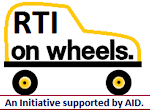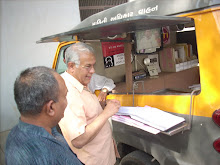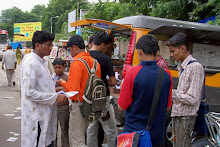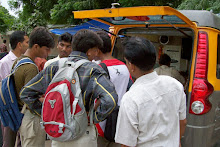Deccan Herald: Gulbarga: Tuesday,
January 28, 2014.
The
departments of revenue and urban development together draw more than half of
queries under the Right To Information (RTI) Act, according to the annual
report for 2011-12 released by the Karnataka Information Commission (KIC).
The two
departments ranked high among the 34 departments of the State government. The
findings suggest that the two departments are most people-oriented and
decisions taken by them have a direct bearing on the common people.
The two
departments together accounted for 54.84 per cent of the total applications
received by all the 34 departments in 2011-12. The revenue department received
85,584 and the urban development department (UDD) 74,480 applications. The
total number of applications received under RTI by all the departments is
2,93,405.
The two
departments, however, recorded a slight decline, of 1.92 per cent, in the
number of applications compared with the year before. In 2010-11, they
accounted for 56.76 per cent of the total applications received by all the
departments.
The
departments of rural development and panchayat raj, home, education, and
transport come next in terms of RTI applications, according to the KIC report,
the latest of its kind.
The revenue
department possesses information which matters to the public, such as records
of land revenue, land reforms, land acquisition, land records, disaster
management, compensation, muzrai, stamps and registration, and the Karnataka
Administrative Tribunal. People thronging the tahsildar offices at taluk
centres is a common sight. Tahsildar is the administrative head and pillar of
revenue department at the taluk level.
The urban
development is another department which deals with the people extensively. It
encompasses the Bruhat Bangalore Mahanagara Palike (BBMP), City Municipal
Corporations, City Municipal Councils, Town Municipal Councils and Town
Panchayats. In addition, it includes the Karnataka Urban Water Supply and
Drainage Board, the urban development authorities, town and country planing,
among others.
Four more
departments received five-digit applications under the RTI. The RDPR received
26,171, Home 15,863, Education 14,870, and Transport 14,769 applications.
All the four
departments recorded an increase in the number of RTI applications.
Another
department to receive many RTI applications was the department of commerce and
industry (8,025 applications). It recorded a quantum jump, of 73.44 per cent,
in the number of applications compared with the year before.
The reason is
said to be rapid industrialisation, coupled with the government’s efforts to
attract domestic and foreign investment. Hence, people seem to be affected by
the department’s decisions.
This apart,
seven departments received more than 5,000 requests under RTI. They were:
Finance (8,312), Public Works (7,189), Energy (7,184), Forest (5,811), Water
Resources (5,667), Cooperation (5,660), and Personnel and Administrative
Reforms (5,158).
The public
enterprises department received just 25 RTI applications the least among all
departments. The infrastructure development department followed next with just
35 applications.














































































